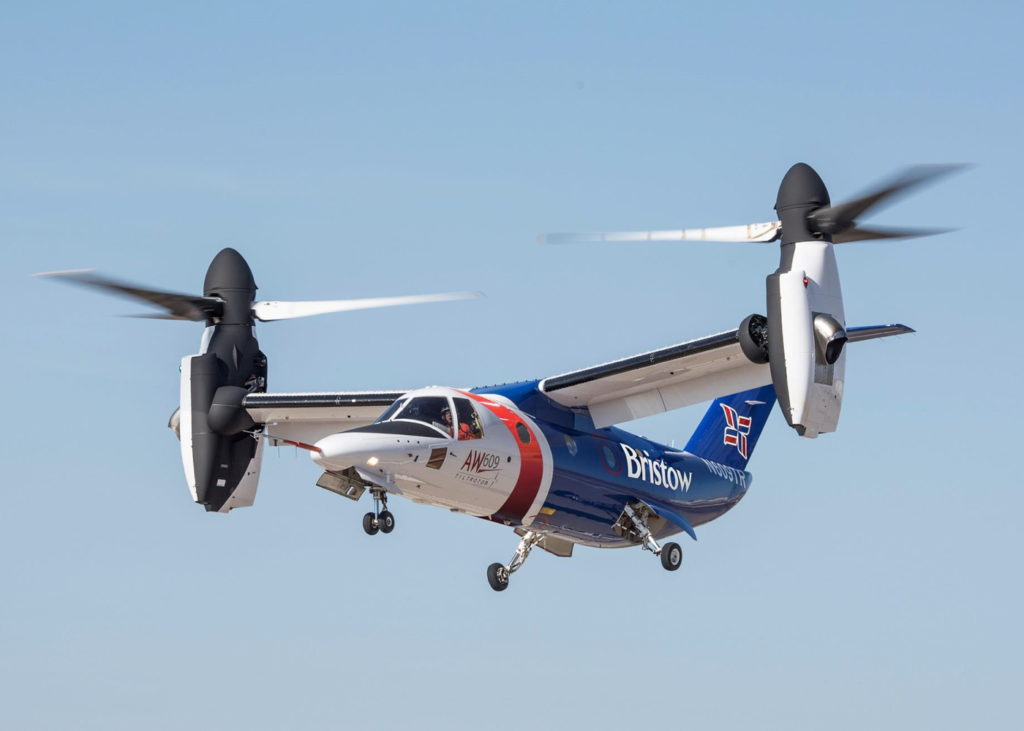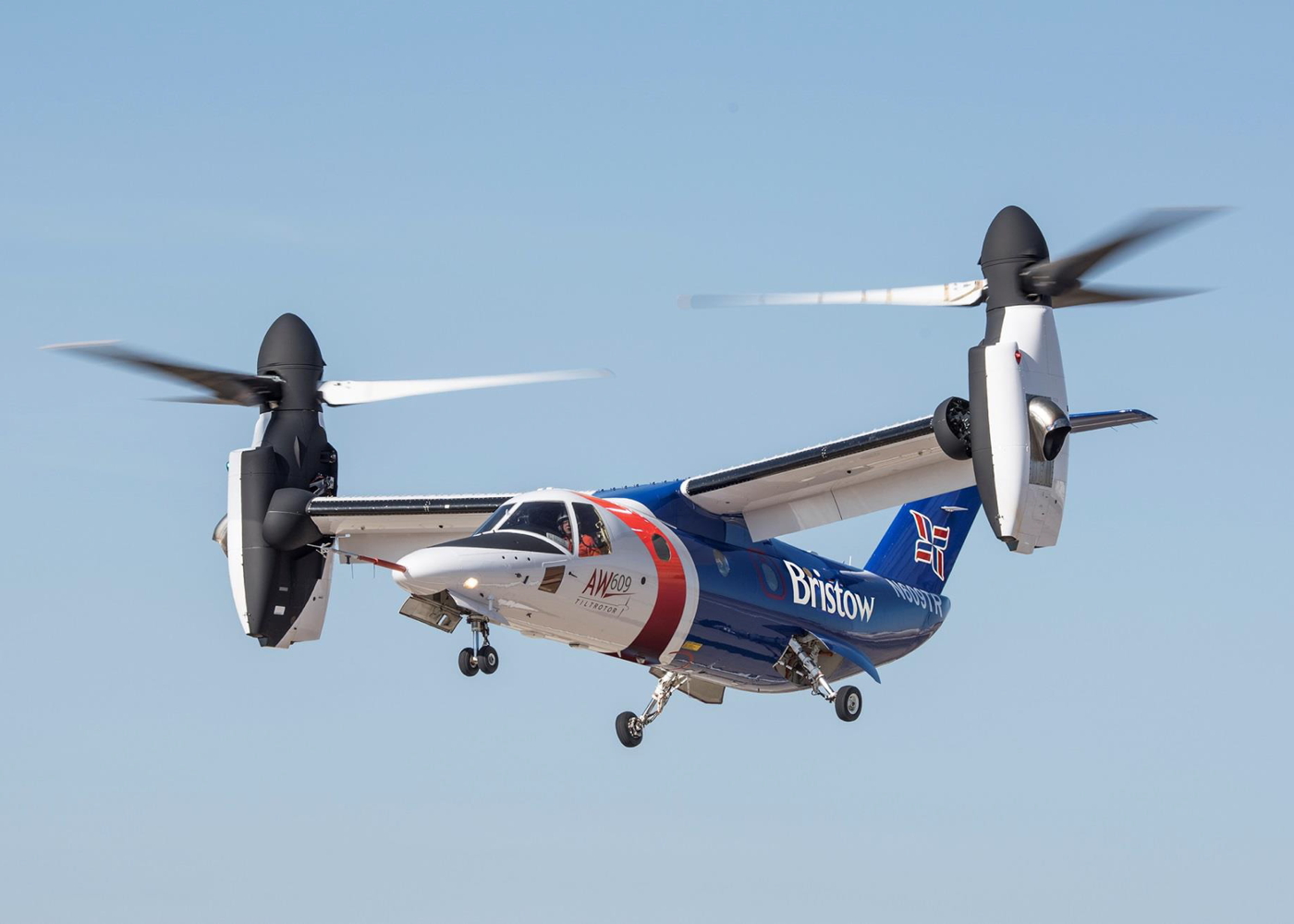Helicopter operator Bristow Group is known primarily as a provider of offshore transportation, moving oil-and-gas workers to and from rigs and platforms in an environment where creature comforts generally get short shrift.

As it looks to the future, however, the company is positioning itself to play a role in the emerging advanced air mobility (AAM) market — embracing the clean, quiet electric air taxis that could someday carry millions of passengers through dense urban centers.
Bristow signaled its more expansive approach to vertical lift last June, when the publicly traded company chose the stock ticker “VTOL” — the popular abbreviation for “vertical take-off and landing” — upon the completion of its merger with Era Group. In March, Bristow announced an executive leadership team reorganization, which president and CEO Chris Bradshaw said would “better align resources with the company’s long-term strategic priorities, which include a focus on new markets such as renewables, additional government services work, and advanced air mobility.”
Shortly thereafter, Bradshaw confirmed to Houston Business Journal that the company is specifically interested in operating new-generation eVTOL aircraft in a consumer-facing transportation business. Bradshaw said that Bristow is currently in a relationship-building phase: “It’s not [happening] tomorrow, but if we don’t move now, we’re not going to have a place in that business three years from now.”
Bristow reported a net loss of $56.1 million on operating revenues of $1.1 billion for the fiscal year ended March 31, 2021. In its latest annual report, the company acknowledged that the downturn in the oil-and-gas industry has negatively impacted its financial results, and said that diversification into AAM “is intended over the long term to grow the business and offset the cyclical nature of the underlying oil-and-gas business.”
On July 1, David Stepanek provided more insight into the company’s thought process during Revolution.Aero, a virtual conference focused on the future of flight. Stepanek was named executive vice president of sales and chief transformation officer as part of Bristow’s recent leadership reorganization.
“We’re very excited about this,” Stepanek said during a panel focused on the operational challenges of urban air mobility. “We see this as a natural progression for the traditional vertical lift that we do today; we see multiple opportunities for these vehicles in our core business and expanding markets.”
Bristow currently derives around 72% of its revenues from oil-and-gas, and 21% from government services including search-and-rescue. It also operates scheduled airline services in Australia and Nigeria that account for around 6% of revenues, with its remaining cash flow coming from aircraft leasing.
That means it has less experience with customer-facing services than some of the other operators that are moving into AAM, including airlines like United and business aviation operators like Luxaviation Group. As one of the world’s largest helicopter operators, however, it could be well positioned to scale to the level that eVTOL manufacturers are envisioning while also bringing expertise with vertical-lift aircraft. As of March, Bristow had 230 owned and leased helicopters in its active fleet.
Stepanek pointed out that Bristow moves hundreds of thousands of people per year through its heliports around the world while also managing its own traffic and communications systems — competencies that should be useful in a sector where much of the necessary infrastructure has yet to be defined.
“In the offshore environment specifically, there is no radar coverage, there is no traffic control system, so we have to manage ourselves. We have to manage communication, we have to track our aircraft both with ground radios and satellite tracking, and then manage the whole [scheduling process] with our customer base,” he said. “It’s quite a task, but we have that infrastructure and that intellectual property to help develop this marketplace.”
As a historical launch customer for various new helicopter models — and now the planned launch customer for the Leonardo AW609 commercial tiltrotor — Bristow also has practice in managing the various problems associated with new aircraft types. According to Stepanek, it’s reasonable to expect that when the first eVTOL models hit the market, “you’re going to find a lot of different things that are happening that you didn’t see in flight test.”
“The different environments that you’re in — whether it’s corrosion, high humidity, different temperatures — the way it’s being operated, the amount of cycles that you’re producing… a lot of things are going to crop up, and you’ve got to be able to have the wherewithal to handle that through your maintenance practices and your flight operations and practices,” he said.
Perhaps the most important thing that Bristow can bring to the AAM market is a strong safety culture, Stepanek suggested. Compared to some other sectors of the helicopter industry, the offshore sector has seen more customer pressure to prioritize safety and embrace proactive tools such as safety management systems and flight data monitoring. Bristow has a longstanding “Target Zero” safety program that aims for zero air accidents — the airline level of safety that most believe will be critical to the success of the air taxi business model.
Stepanek said that the redundancies being designed into eVTOL aircraft should give them an inherently high level of safety, which will be reinforced by strong maintenance and operating procedures developed in conjunction with aircraft manufacturers. But he argued that “safety is evolutionary, not revolutionary,” with robust aviation safety cultures typically developed over years of practice.
“We need that culture, that decades of the evolutionary period that gets people to make good decisions at high pressure points, because there’s going to be a lot of those in this market that’s coming forward,” he continued. “There’s going to be a high tempo of operation, people are going to want to get to their location, they’re paying high dollar for it, and there’s going to be a lot of pressure. . . . You’ve got to make sure that you [have] a safety culture that can support that.”









